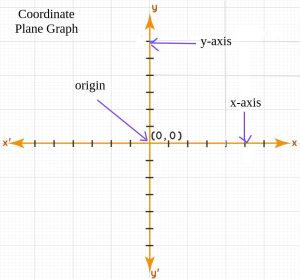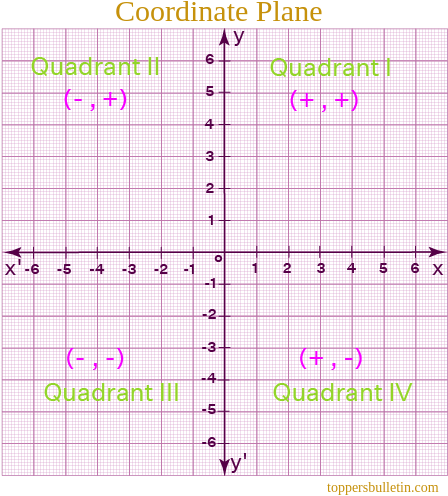What is the Coordinate Plane?
The coordinate plane is a two-dimensional grid used in mathematics to plot and analyze mathematical relationships and data. It was invented by the French mathematician Rene Descartes in the 17th century and is sometimes called the Cartesian plane, named after Descartes.
How Does the Coordinate Plane Work?
The coordinate plane is made up of two perpendicular lines called the x-axis and y-axis, which intersect at the center of the plane, known as the origin. The x-axis represents horizontal movement, and the y-axis represents vertical movement.
Each point on the coordinate plane is identified by a pair of numbers called coordinates, written in the form (x, y). The x-coordinate indicates the horizontal position of the point, and the y-coordinate indicates the vertical position of the point.
What are Quadrants on the Coordinate Plane?
A coordinate plane is divided into four regions, called quadrants, by the x-axis and the y-axis. Each quadrant is identified by a Roman numeral, starting with the upper right quadrant and moving counter-clockwise:
- Quadrant I: This is the upper right quadrant, where both the x and y coordinates are positive.
- Quadrant II: This is the upper left quadrant, where the x-coordinate is negative and the y-coordinate is positive.
- Quadrant III: This is the lower left quadrant, where both the x and y coordinates are negative.
- Quadrant IV: This is the lower right quadrant, where the x-coordinate is positive and the y-coordinate is negative.
Examples of Points and Shapes on the Coordinate Plane
Points and shapes can be plotted on the coordinate plane using their coordinates. For example, the point (2,3) is located 2 units to the right of the origin on the x-axis, and 3 units up from the origin on the y-axis. The line y = 2x + 1 passes through the point (0,1) and has a slope of 2. The circle centered at (3,2) with radius 4 can be plotted by finding all points that are 4 units away from (3,2) in every direction.
Facts
- The origin, or (0,0), is the center of the coordinate plane and is the reference point for all coordinates.
- The x-axis and y-axis are perpendicular to each other, and the point where they intersect is the origin.
- The coordinate plane is divided into four quadrants, numbered I to IV, which are used to identify the location of points.
- The slope of a line on the coordinate plane represents the rate at which the y-coordinate changes with respect to the x-coordinate.
- The distance between two points on the coordinate plane can be found using the Pythagorean theorem.
FAQs on Coordinate Plane
What is the purpose of the coordinate plane?
The coordinate plane allows us to represent and visualize mathematical relationships and data in two dimensions. It is a fundamental tool in mathematics and is used in many fields, including physics, engineering, computer science, and economics.
What is the origin in the coordinate plane?
The origin is the point where the x-axis and y-axis intersect, located at (0,0).
What are the four quadrants on the coordinate plane?
The four quadrants on the coordinate plane are numbered I to IV and are used to identify the location of points.
How do you plot a point on the coordinate plane?
To plot a point on the coordinate plane, start at the origin and move horizontally along the x-axis the number of units given by the x-coordinate, and then move vertically along the y-axis the number of units given by the y-coordinate.


